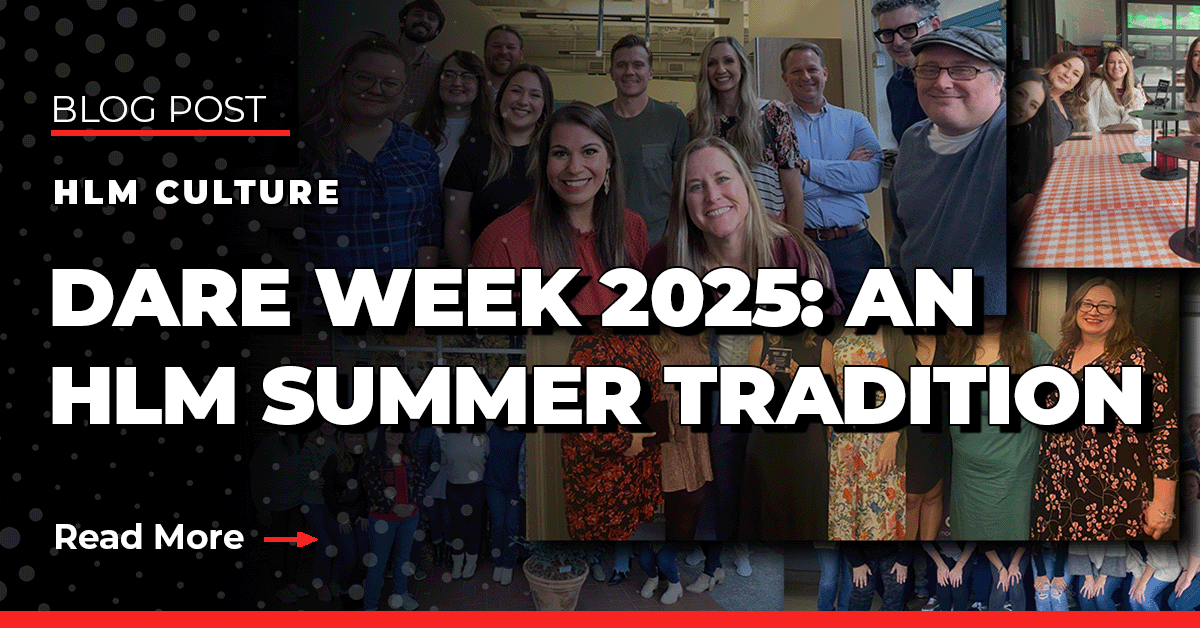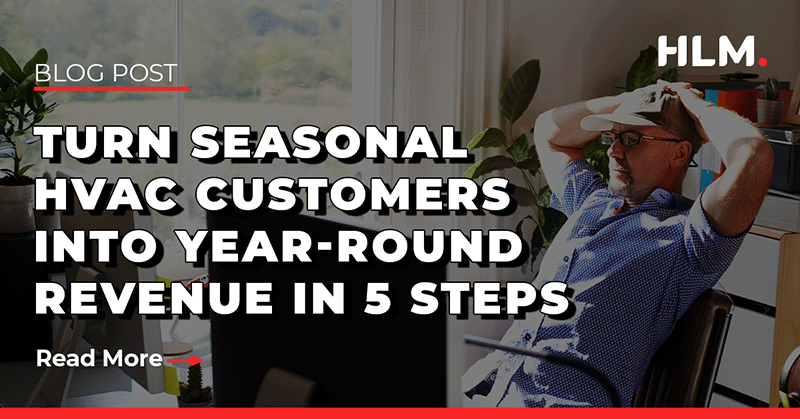![]() By Annie Wissner
Nov 29, 2022 6:09:00 PM
By Annie Wissner
Nov 29, 2022 6:09:00 PM
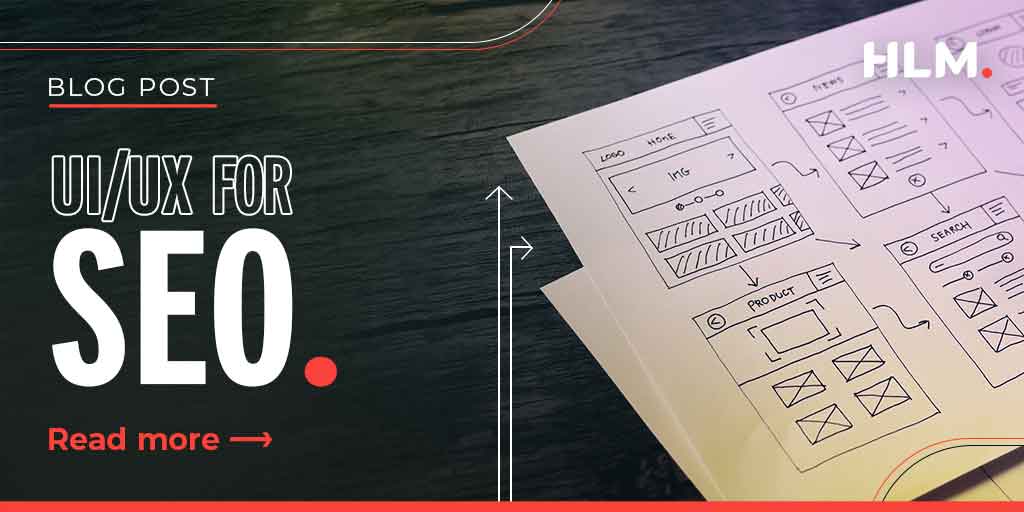
Search engine optimization has changed dramatically in recent years. With search engines like Google constantly introducing new algorithms and ranking factors, it’s becoming harder for businesses to reach their target audience online.
The good news is that there are a number of simple strategies you can use to optimize your website and make it as search engine friendly as possible. A great way to do this is to focus on the architecture and user interface/user experience (UI/UX) design of your website. Both aspects directly impact how visitors perceive your website, and if done correctly, they can also help improve your search engine results.
Great UI/UX design increases customer confidence and increases the likelihood that they'll buy your product or service.
In this blog, we'll explore exactly what these terms mean, how you can use them to improve the performance of your website, and how they're implemented in design and development processes.
What is Website Architecture?
Website architecture refers to the structural elements and design of your website, including how your website's pages are structured and linked, and it has a direct impact on your user experience and SEO.
In a nutshell, website architecture refers to the skeletal structure of your website's pages, and typically includes the following:
- URL structure of your website: The URL structure of your pages refers to the actual website address used to direct your visitors to different pages or sections of your website. Ideally, you want to keep this as clean, short, and descriptive as possible, so it's user-friendly and easy to remember.
- Website hierarchy: A site hierarchy refers to the order in which your pages and content are displayed on your site, and most importantly, how users can navigate to other pages. With an effective site hierarchy, it should be easy for visitors to find what they need on your site and return to their original entry point. An ideal website architecture helps users and search engine crawlers easily navigate your site.
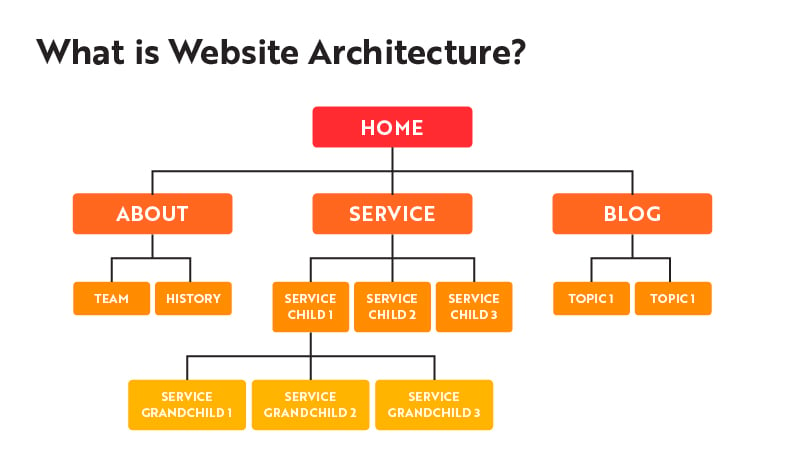
What is Page Architecture?
Page architecture refers to the overall organization of an individual web page and its components, including the header structure, copy structure, lists, etc. This influences how search engine crawlers read the page and how screen readers and the visually impaired absorb the information on the page.
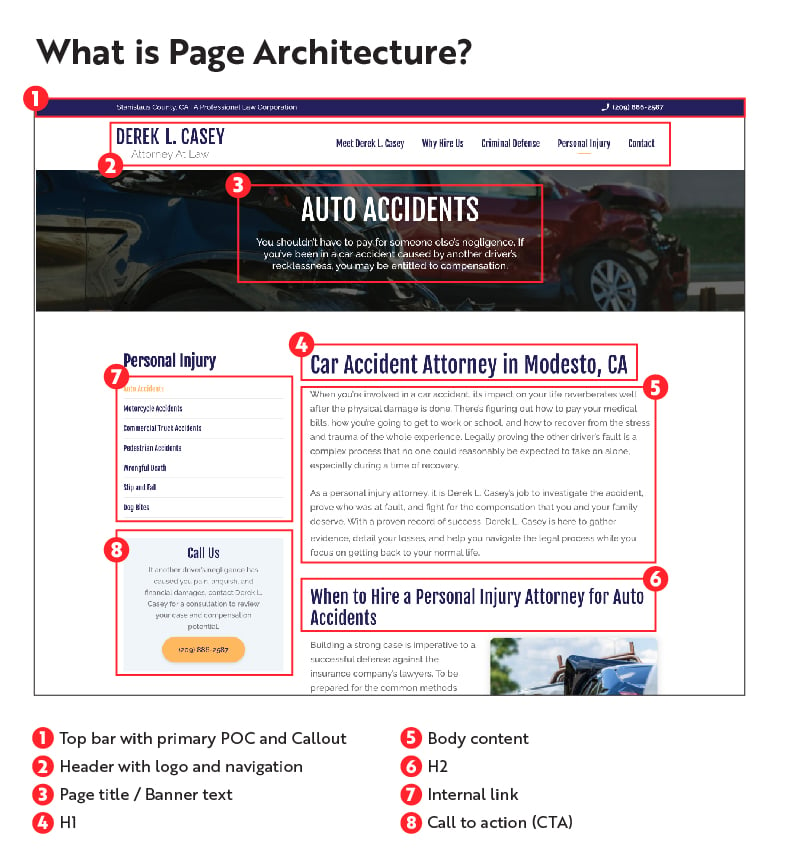
What is UI/UX?
Great UI/UX design increases customer confidence and improves the likelihood that they'll buy your product or service. The number of ideal target customers who visit your website organically (without paid motions) is a good indicator of the effectiveness of your website's UI/UX design.
- User Interface (UI): The way your website looks, how visitors interact with it, and how they navigate through it is known as its user interface. The user interface relates specifically to the screens, buttons, and other visual and interactive features a person uses to interact with your website.
- User Experience (UX): The user experience refers to how website visitors feel when they interact with your website. It's not a physical, tangible thing, it's the ease and user-friendliness of the interaction as a whole. (NOTE: Although the end-user experience is not tangible, comprehensive planning and documentation are necessary for a good UX).

Why Does Website Architecture Matter?
A well-built website architecture can help a site gain traction and visibility on search engines, resulting in more conversions from visitors. Website Architecture is the map or building blocks to rank when searched, and allows visitors and Google to navigate the site with ease.
Why Does UI/UX Matter?
UI/UX design influences user experience, satisfaction, and conversion rates. Good user experience design (UX) can influence quality interactions, leading users to take the desired action (like filling out a form or making a call). Good UX planning can lead to good UI design and, therefore, a positive user experience, resulting in users feeling confident and pleased with their decision.
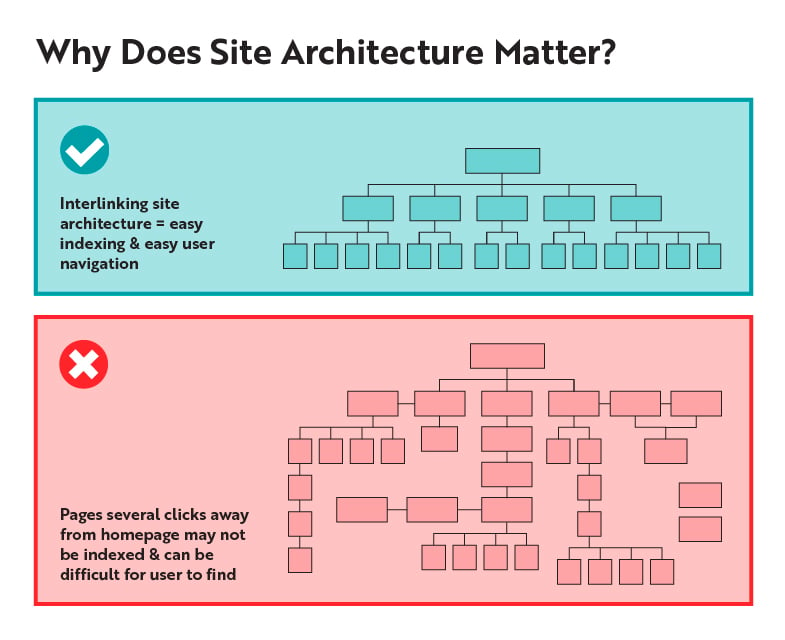
What Does UI/UX Have to Do with SEO?
- Google ranks relevant content and UX: The Google algorithm places high value not only on the relevance of search results but also on the UX of the website itself. Therefore, it's necessary to have a clear direction mapped out for users on the website.
- SEO drives site structure: When it comes to UI/UX, SEO helps determine how the site and pages should be structured so that both search crawlers and people understand how to process the information on the page.
- Site and page structure: Proper site and page structure help people who use screen readers easily navigate to find the information they need, which in turn promotes a positive user experience.
3 Ways to Implement Good Website Architecture and UI/UX for SEO
Now that you understand the importance of website architecture and UI/UX design, you might be wondering how you can implement these strategies to optimize your website and increase your search engine traffic.
Here are three ways to approach this:
- Stay consistent with the design of your website: The design of your website is the first thing visitors will see, so it's important to maintain a consistent look and feel throughout your site. This includes both your layout and the design elements (colors, fonts, etc.) you use to create this aesthetic. You can also choose a tonal/cognitive color palette that conveys your brand personality and supports your content.
- Choose clean/readable fonts: Fonts on your website can play a critical role in your UI/UX design and have a direct impact on your search engine ranking. Make sure the fonts you choose are readable and easy to understand and don't go overboard with too many fonts on one page.
- Keep your page designs simple: Don't try to cram too much information on your pages. Instead, keep your designs clean and focused on your most important messages and offers.
The Bottom Line
Website architecture and UI/UX design go far beyond page hierarchy and cool graphics, and they can have a significant impact on your search engine ranking. If you want to reach more potential customers and increase your website traffic, it's important to consider your architecture and UI/UX design, and how they can be optimized to help with SEO.
With the right structural and visual design elements, such as clean and organized URLs, easy-to-find and relevant content, and a fast-loading page speed, you can transform your site into an SEO-friendly environment that encourages website visitor engagement and helps you reach a broader audience.
Author: Annie Wissner
Contact Us NowRecent Posts
When you're done with this post, check out our other content below for more Digital Marketing expertise
Contact Us Today
Complete the form below and receive a call within minutes.
Need faster results? Call us now at (888) 717-4249



